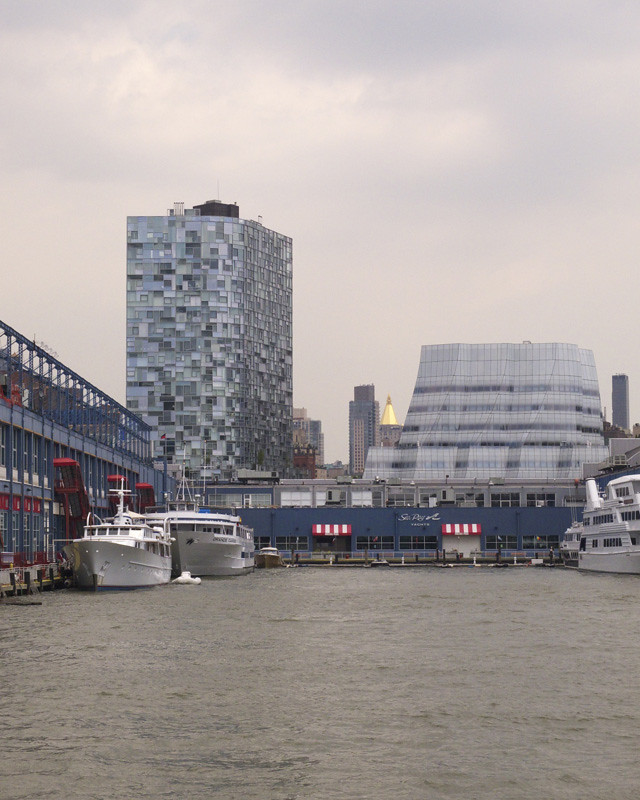
Pulling out of the slip at Chelsea Piers, the starchitecture draws one's attention to the skyline, but there's just as much interesting stuff happening over the water, such as the various states and construction of the piers along the Hudson River. Many piers, both old and new, are built on wood piles, meaning that a good deal of the 50-odd piers that used to line the river are ruins. So why aren't they removed? Primarily because the piers are considered ecological habitats for water creatures, so they are protected. And what of the piers that are not constructed from wood piles? Pier 57, which will be converted to commercial and cultural venue by LOT-EK, is the rare example where concrete caissons are the structure for the pier. Three huge concrete boxes, to be exact. And per this article, each is approximately 360' long by 85' wide by 30' tall; no wonder the pier is positioned to be renovated! Further south, Pier 54 is sinking, but is set to be rehabbed as part of Hudson River Park.
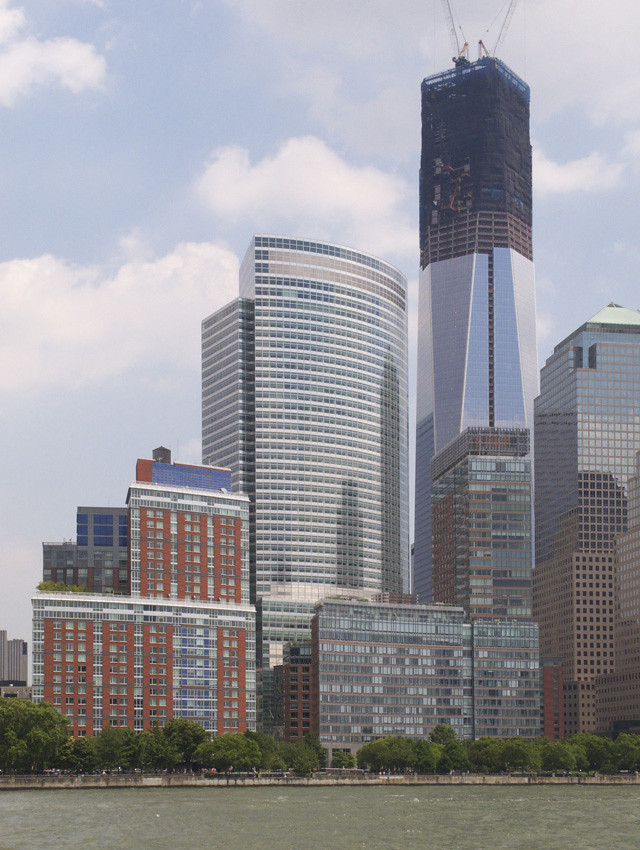
Continuing south down the Hudson River towards Battery Park City, Brunzema clarified one of the most prevalent misconceptions about the community built on landfill: A small portion of the area (about 25%) is built on landfill from the construction of the World Trade Center; much is sand from under the Verrazano-Narrows Bridge.
After taking in the Statue of Liberty and some great views of the changing Lower Manhattan skyline, more tales of landfill came in the form of Governors Island, a fort, army post, and now public space open on weekends May to September. The southern half of the island was created from the dirt excavated for the construction of the Lexington Avenue Subway (4,5,6), though I've heard elsewhere that it came from the construction of the Brooklyn Battery Tunnel. This southern half will be transformed as a park, but its originally flat profile made it an ideal landing spot for a Wright Brothers (or just Wilbur) flight.
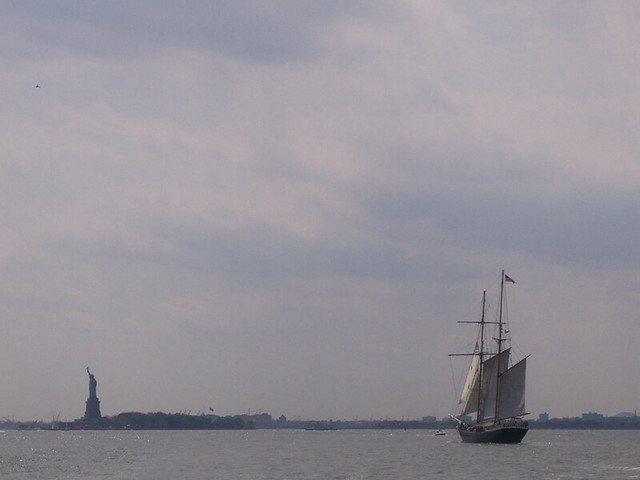
Moving up into the East River, Brunzema pointed out some old warehouses that will be demolished to create a beach for East River State Park. The park's Pier 42 will become a floating pool, which allows swimmers to dip safely into river water. Brunzema has designed the pool, one of which was built in the Hudson Valley. Since the East River is contaminated due to combined sewer overflow (CSO), the water will be filtered by mussels.
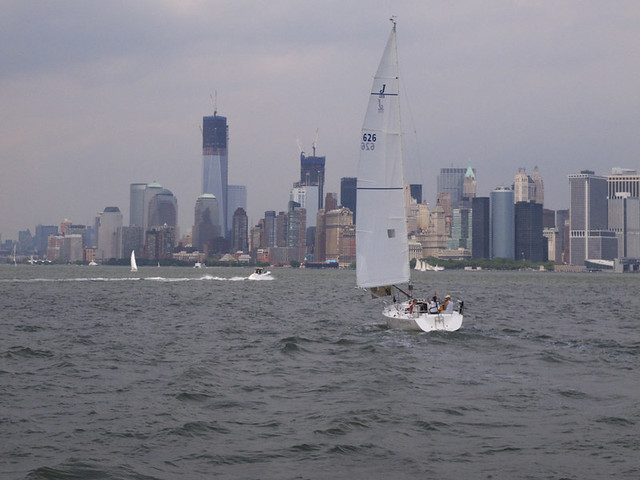
Of course, the East River technically is not a river; it's a tidal strait, connecting Long Island Sound on the north with Upper New York Bay on the south. Fast-moving currents led Verdant Power to test tidal energy near Roosevelt Island in 2003. According to Brunzema, the water was so strong that it broke the equipment. Nevertheless, tidal power is being pursued for the Cornell Tech Campus planned for the southern portion of Roosevelt Island. At this tip is the FDR Four Freedoms Park nearing completion:
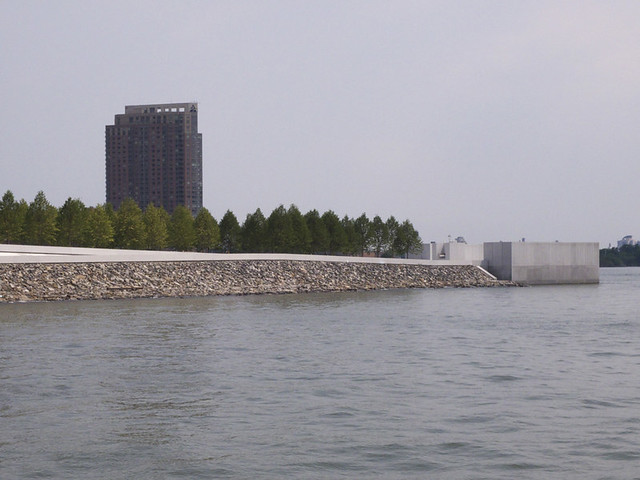
After a slow cruise up the Harlem River and around Spuyten Duyvil, the boat traveled down the Hudson again. Passing the row of prewar buildings overlooking Riverside Park in the 80s and 90s (streets), Brunzema recounted a talk where Saskia Sassen described how the park was a dangerous place in the 1980s. People with dogs walked their dogs in the park, naturally, yet over time they took back the park as more people got dogs and walked them in the park together. Today those problems are a thing of the past, because of a bottom-up strategy, planned or not.

Before pulling back into the slip at Chelsea Piers, we got a glimpse of the Space Shuttle Enterprise on the deck of the Intrepid. Its prominent location on the ship's prow is temporary, though, as a permanent home is planned on land near the Intrepid. Seeing the shuttle made the eight-year-old boy-in-me's day, especially since I probably won't see it again...at least until September.